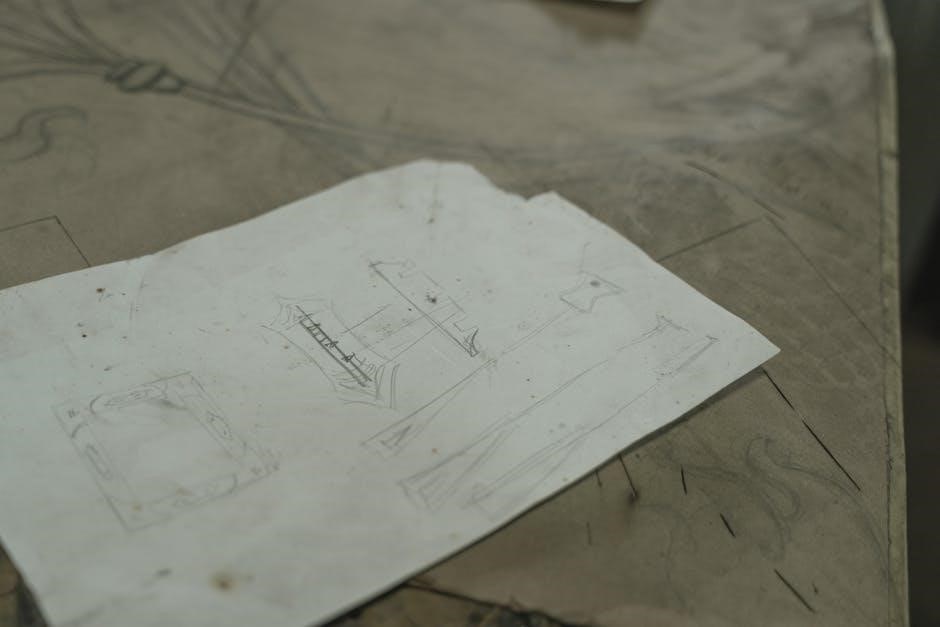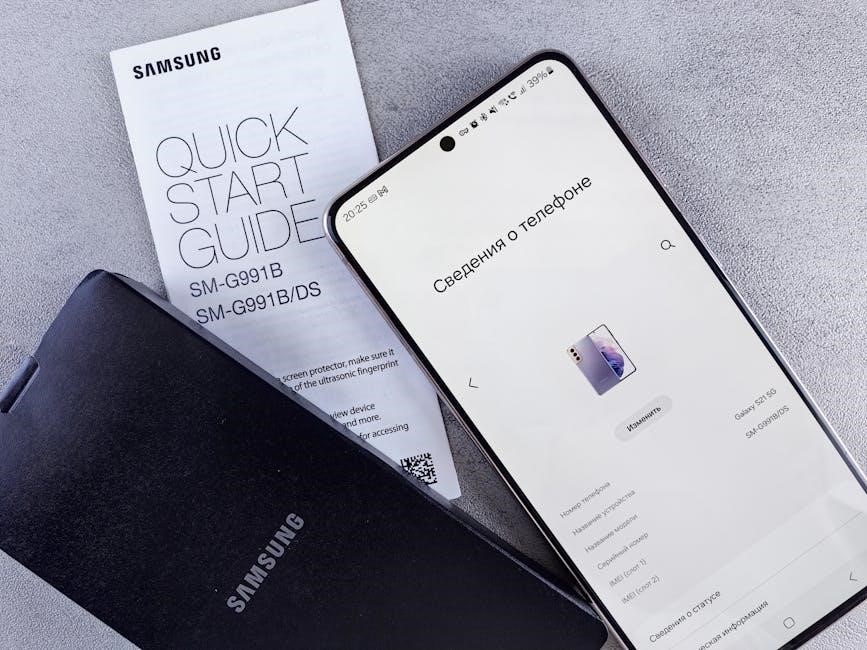
singer 99k instruction manual
The Singer 99K sewing machine is a vintage model from the 1950s, known for its durability and versatility. It’s ideal for sewing various fabrics and offers a range of stitch options, making it a favorite among sewing enthusiasts. The instruction manual provides essential guidance for setting up, operating, and maintaining the machine, ensuring optimal performance and longevity. Whether you’re a beginner or an experienced sewer, this manual is a valuable resource for mastering the Singer 99K.
Overview of the Singer 99K Model
The Singer 99K is a versatile and durable sewing machine designed for both home and professional use. It belongs to the Class 99 series, known for its reliability and ease of operation. The 99K model features a compact design with numbered tension and stitch length controls, making it user-friendly. It supports a variety of stitches, suitable for sewing different fabrics, from delicate textiles to heavier materials. The machine is compatible with various attachments, such as zipper feet and buttonhole attachments, expanding its functionality. With its robust construction and straightforward controls, the Singer 99K remains a popular choice among sewers, offering consistent performance for both simple and complex projects. Its enduring popularity is a testament to its quality and versatility.
Importance of the Instruction Manual
The instruction manual is an essential resource for mastering the Singer 99K sewing machine. It provides detailed guidance on setting up, operating, and maintaining the machine, ensuring optimal performance. The manual explains how to use various features, such as stitch selection, tension adjustment, and attachment compatibility. It also offers troubleshooting tips for common issues, helping users resolve problems quickly. For both beginners and experienced sewers, the manual serves as a comprehensive guide to unlocking the machine’s full potential. By following the instructions, users can extend the lifespan of their Singer 99K and achieve professional-quality results. The manual’s clear, step-by-step instructions make it an indispensable tool for anyone working with this vintage sewing machine.

Table of Contents
The table of contents organizes the manual into clear sections, covering setup, operations, maintenance, and troubleshooting. It helps users quickly locate specific instructions for their Singer 99K sewing machine.
Structure of the Instruction Manual
The Singer 99K instruction manual is structured logically to guide users through setup, operation, and maintenance. It begins with an introduction, followed by unpacking and initial setup instructions. The manual then progresses to basic operations, including threading, bobbin winding, and stitch selection. Dedicated sections cover maintenance routines, such as cleaning and lubrication, as well as troubleshooting common issues like thread breakage or uneven stitching. Advanced features, like adjusting tension and using attachments, are also detailed. The manual concludes with repair guidance and final tips for optimal use. Clear headings, diagrams, and step-by-step instructions ensure ease of understanding, making it a comprehensive resource for both beginners and experienced sewists.
Navigating the Manual
Navigating the Singer 99K instruction manual is straightforward due to its clear organization. The manual features a detailed table of contents, allowing users to quickly locate specific topics. Each section is divided into numbered pages, with headings and subheadings that guide readers through setup, operation, and maintenance. Visual aids, such as diagrams and illustrations, complement the text, making complex steps easier to follow. The manual also includes an index for quick reference, enabling users to find information about specific parts or functions. By following the logical flow or using the index, sewists of all skill levels can efficiently navigate the manual and access the information they need.

Setting Up Your Singer 99K
Setting up your Singer 99K involves careful unpacking, placing it on a stable surface, and connecting the power cord. Ensure proper alignment and initial checks for smooth operation.
Unpacking and Initial Inspection
When unpacking your Singer 99K, carefully remove the machine from its box and packaging materials. Inspect for any visible damage or scratches. Check that all accessories, such as the power cord, needles, and attachments, are included. Ensure the machine is clean and free from debris. Examine the exterior and interior for any manufacturing defects or misaligned parts. Verify that the stitch selector, tension dials, and other controls are functioning smoothly. If any issues are found, contact Singer customer support immediately. Refer to the manual to identify and locate each component properly. This initial inspection ensures your machine is ready for proper setup and use.
Placing the Machine on a Table or in a Cabinet
To ensure optimal performance and stability, place the Singer 99K on a sturdy, flat table or sewing cabinet. Choose a location with good lighting and proximity to a power outlet. Avoid uneven or wobbly surfaces, as they may cause vibration or misalignment. If using a sewing cabinet, ensure the machine fits securely and aligns with the opening. For tabletop use, consider a rubber mat or non-slip surface to prevent movement. Keep the machine away from direct sunlight and moisture to protect its finish and internal components. Proper placement enhances sewing accuracy and reduces the risk of damage. Always follow the manual’s guidelines for ideal positioning.
Connecting the Power Cord and Testing the Motor
Before using your Singer 99K, ensure the power cord is securely plugged into a grounded electrical outlet. Verify that the outlet matches the machine’s voltage requirements, as specified in the manual. Once connected, turn the power switch on to test the motor. The machine should operate smoothly and quietly; If you notice any unusual noise or vibration, turn it off immediately and check for obstructions or misalignment. To test further, press the foot pedal gently to ensure the motor responds correctly. Proper power connection and motor function are essential for safe and efficient sewing. Always unplug the machine when not in use or during maintenance.

Basic Operations
Master essential functions like threading, bobbin winding, stitch selection, and starting your first stitch. These steps ensure smooth operation and help you achieve professional results.

Threading the Machine
Proper threading is crucial for smooth operation. Always turn off the machine before threading. Locate the spool pin and follow the manual’s threading diagram. Insert the thread through the tension discs, then through the take-up lever. Gently pull the thread to remove any slack. Guide the thread through the needle’s eye from front to back. Trim excess thread close to the needle. Test the tension by sewing on scrap fabric. Ensure the thread is seated correctly in the tension discs for consistent stitch quality. Proper threading prevents thread breakage and ensures even stitching. Refer to the manual for specific guidance if threading feels unclear.
Winding the Bobbin
Winding the bobbin correctly ensures smooth stitching. Begin by cutting a piece of thread and inserting it into the bobbin winder. Refer to the manual for the correct thread type. Place the bobbin on the winder and pull the thread gently to secure it. Engage the bobbin winder and start the machine. Allow the bobbin to fill evenly, stopping when it is nearly full. Trim the excess thread close to the bobbin. Avoid overfilling, as this can cause tension issues. Always use the same thread for the bobbin as the top thread to maintain consistency. Properly wound bobbins prevent thread breakage and ensure even stitching. Test the bobbin by gently tugging on the thread to check for even winding. Follow the manual’s guidance for specific settings or adjustments. Ensure the bobbin is securely placed in the machine before sewing. This step is essential for optimal performance. Always refer to the Singer 99K manual for detailed instructions. Keep extra bobbins on hand for convenience. Never wind the bobbin too tightly, as this can damage the machine. Regularly check the bobbin for wear and replace it if necessary. Clean the bobbin area periodically to prevent dust buildup. Proper bobbin maintenance extends the life of your sewing machine. Always store unused bobbins in a dry, cool place. Winding the bobbin is a simple process, but it requires attention to detail for best results. Use high-quality thread to ensure durability and consistency. If the bobbin does not wind evenly, consult the troubleshooting section of the manual. Never force the thread while winding, as this can cause tangles or breaks. Practice winding a few bobbins to get a feel for the process. Keep the bobbin winder clean and free of debris for smooth operation. Always unplug the machine before cleaning or maintaining the bobbin area. Winding the bobbin is a critical step in preparing your Singer 99K for sewing. Take your time to ensure it is done correctly. This will help you achieve professional-looking stitches and prevent common sewing issues. By following the manual’s guidelines, you can master the bobbin-winding process and enjoy seamless sewing experiences. Remember, proper preparation is key to achieving the best results with your Singer 99K sewing machine. Always refer to the manual for specific instructions tailored to your machine. Happy sewing!
Selecting the Correct Stitch
Selecting the correct stitch is essential for achieving the desired results in your sewing projects. The Singer 99K offers a variety of stitches, including straight, zigzag, and decorative options. Refer to the stitch chart in the manual to identify the best stitch for your fabric type and project needs. For example, use a straight stitch for lightweight fabrics and a zigzag stitch for stretchy materials. Decorative stitches add embellishments for creative projects. Always test the stitch on a scrap piece of fabric before sewing your final piece. This ensures the stitch length and width are appropriately set. Adjust the stitch settings as needed for optimal performance. Proper stitch selection enhances the quality and durability of your work. Follow the manual’s guidance for specific stitch recommendations. Experiment with different stitches to explore the machine’s capabilities. This feature allows you to tailor your sewing to various materials and designs. By selecting the right stitch, you can achieve professional-looking results with ease. The Singer 99K’s versatility shines through its stitch options, making it suitable for both beginners and advanced sewists. Always refer to the manual for detailed instructions on stitch selection and customization. This ensures you make the most of your sewing machine’s features. Happy sewing!
Starting Your First Stitch
Starting your first stitch on the Singer 99K is straightforward once the machine is properly threaded and set up. Position your fabric under the presser foot, aligning the edge with the machine’s guide. Gently lower the presser foot using the lever to secure the fabric in place. Hold the fabric lightly but firmly to maintain control. Turn the handwheel to manually lower the needle into the fabric. Once the needle is in position, gently press the foot pedal to begin sewing. Start with a slow, steady pace to ensure even stitching. Use the reverse stitch lever if needed to secure the beginning of your seam. Always practice on scrap fabric before working on your final project to ensure everything is set correctly. This step ensures a smooth start to your sewing experience.

Maintenance and Cleaning
Regular cleaning and lubrication ensure optimal performance of your Singer 99K. Remove lint and thread remnants from the bobbin area and tension discs. Oil moving parts occasionally to prevent friction. Inspect for wear and tear, replacing parts as needed. Always unplug the machine before cleaning for safety.
Regular Cleaning Schedule
A well-maintained Singer 99K ensures smooth operation and longevity. Clean the machine after every project to remove lint and thread fragments. Use a soft brush to gently sweep away debris from the bobbin area, tension discs, and stitch plate. For deeper cleaning, remove the bobbin case and carefully vacuum or brush out accumulated dust. Regularly inspect the needle and hook for residue, as buildup can cause thread breakage or uneven stitching. Wipe the exterior with a damp cloth to maintain its appearance. Always unplug the machine before cleaning to avoid accidental start-ups. A consistent cleaning routine prevents mechanical issues and keeps your Singer 99K performing at its best for years to come.
Lubricating Moving Parts
Regular lubrication is essential to keep the Singer 99K running smoothly and quietly. Locate the oil holes, typically found near the bobbin area or hook race. Apply a few drops of Singer-branded or high-quality sewing machine oil to these points. Gently turn the handwheel to distribute the oil evenly across moving parts. Avoid over-lubrication, as excess oil can attract dust and dirt. Repeat this process every 50 hours of use or when you notice increased noise or resistance. Proper lubrication prevents friction, reduces wear on components, and ensures consistent stitching quality. Always use the recommended oil type to maintain the machine’s performance and longevity.
Replacing Needles and Other Parts
To replace the needle on the Singer 99K, first, ensure the machine is turned off and unplugged for safety. Locate the needle clamp screw, typically found near the bobbin area, and remove it to take out the old needle; Insert the new needle, ensuring it’s the correct type for the Singer 99K, and tighten the screw securely. For other parts like the bobbin or presser foot, simply remove the old one and install the new one, making sure it’s properly aligned with the machine’s mechanisms. Check the manual for specific instructions and use appropriate tools to avoid damage. Keep a supply of needles and common parts to maintain your machine’s performance and longevity.

Troubleshooting Common Issues
Identify and resolve issues quickly by checking power, thread tension, and bobbin alignment. Refer to the manual for specific solutions to ensure smooth operation.
Machine Not Turning On
If your Singer 99K sewing machine does not turn on, first ensure the power cord is securely plugged into both the machine and a functioning electrical outlet. Check if the power switch is in the “on” position. Verify that the outlet is working by testing it with another appliance. If issues persist, inspect the power cord for damage or frays. Consult the manual for fuse replacement instructions if applicable. Ensure no safety features, like the bobbin winder or reverse stitch lever, are engaged. If the machine still does not power on, refer to the troubleshooting section or contact Singer customer support for assistance.
Thread Breakage
Thread breakage on the Singer 99K can occur due to improper threading, incorrect tension, or using low-quality thread. To resolve this, first, rethread the machine following the manual’s guidelines, ensuring the thread passes through all guides smoothly. Check the tension discs and adjust them if they are too tight. Use high-quality thread suitable for your fabric type. If the issue persists, inspect the needle for damage or incorrect installation. A blunt or bent needle can cause thread to break frequently. Ensure the bobbin is correctly wound and seated. If breakage continues, consult the manual for additional troubleshooting steps or contact Singer support for assistance. Proper maintenance and correct setup are key to preventing this issue.
Uneven Stitching
Uneven stitching on the Singer 99K can result from incorrect tension settings, improper needle alignment, or misaligned fabric. To address this, first, check and adjust the tension on both the top thread and bobbin. Ensure the needle is straight and properly installed. If the fabric is not moving smoothly, use the built-in fabric guide or adjust the presser foot pressure. Uneven stitches can also occur if the machine is not threaded correctly or if the bobbin is not seated properly. Re-thread the machine following the manual’s instructions and ensure the bobbin is aligned correctly. If the issue persists, consult the manual for additional guidance or consider adjusting the stitch length and width settings to better suit your fabric type. Proper alignment and consistent fabric movement are key to achieving even stitches.
Noise or Vibration
Noise or vibration while using the Singer 99K can indicate improper machine setup or maintenance. Ensure the machine is placed on a stable, flat surface and secured firmly. If the machine is in a cabinet, check that it is properly aligned and fastened. Excessive noise may also result from lack of lubrication in moving parts. Regularly clean and oil the machine according to the manual’s instructions. Additionally, using the correct needle type and size for your fabric can minimize vibration. If the issue persists, inspect for loose screws or misaligned parts. Addressing these factors will help restore smooth and quiet operation. Always refer to the maintenance section for detailed lubrication guidance.

Advanced Features
Unleash your creativity with customizable stitch settings, automatic tension, and a built-in thread cutter. Explore advanced options like adjustable stitch length and width for precise, professional results.
Using Different Attachments
The Singer 99K sewing machine offers a variety of attachments to enhance your sewing experience. These include the zipper foot, buttonhole attachment, and blind hem foot. Each attachment serves a specific purpose, such as creating perfect buttonholes or sewing zippers effortlessly. To use them, simply snap the desired attachment onto the machine’s presser foot holder, ensuring it clicks securely into place. Always refer to the manual for specific alignment instructions. Experiment with different attachments to tackle various projects, from home decor to garment construction. Proper use of attachments can significantly improve the quality and versatility of your stitching, making your sewing journey more enjoyable and productive. Explore these tools to unlock your machine’s full potential.
Adjusting Tension
Proper tension adjustment is crucial for achieving even stitching on the Singer 99K. The machine features both upper and bobbin tension controls. To adjust the upper tension, locate the small dials on the front of the machine. Turn the dial clockwise to tighten the tension or counterclockwise to loosen it. For the bobbin tension, gently pull the bobbin thread to check its resistance. If it feels too tight or too loose, adjust the small screw on the bobbin case. Always test your stitches on a scrap fabric after making adjustments. Correct tension ensures balanced stitching, preventing issues like puckering or loose threads. Regularly check and adjust tension, especially when switching fabrics or threads, to maintain optimal sewing performance and results.
Changing Stitch Length and Width
The Singer 99K allows you to customize your stitches by adjusting the length and width. To change the stitch length, use the stitch length dial located on the front of the machine. Turn the dial clockwise to decrease the length or counterclockwise to increase it. For stitch width, use the width adjustment dial, typically found near the stitch length control. Some models may use a button instead of a dial. The machine offers a range of stitch lengths (0-4mm) and widths (0-5mm) to suit different fabrics and sewing needs. Always test the stitch settings on scrap fabric before sewing your final project. Adjusting these settings ensures precise control over your stitches, enhancing the quality of your sewing projects.

Attachments and Accessories
The Singer 99K comes with various attachments and accessories to enhance sewing efficiency. These include zipper feet, buttonhole attachments, and additional presser feet for specialized tasks. Use them to achieve professional results.
Overview of Available Attachments
The Singer 99K sewing machine offers a variety of attachments designed to enhance your sewing experience. These include a zipper foot, buttonhole attachment, and specialized presser feet for tasks like blind hems, gathering, and quilting. Each attachment is crafted to improve precision and versatility, allowing you to tackle diverse projects with ease. The zipper foot, for instance, ensures smooth guidance of zippers, while the buttonhole attachment creates perfect buttonholes effortlessly. Additional accessories like extension tables and storage cases are also available to maximize convenience. These attachments are typically included in the original packaging or can be purchased separately. The instruction manual provides detailed guidance on installing and using these attachments effectively.
Using the Zipper Foot
To use the zipper foot on your Singer 99K, begin by attaching it to the machine. Align the pin on the foot with the hole on the presser foot bar and secure it tightly. This foot is designed to guide zippers smoothly, ensuring even stitching. Place the zipper under the foot, aligning the edge with the guide. Lower the presser foot and sew slowly, keeping the zipper straight; For thicker zippers, adjust the needle position to prevent hitting the teeth. This attachment is ideal for sewing zippers on bags, clothing, and home decor. Always refer to your manual for specific guidance on tension and stitch selection when using the zipper foot.
Using the Buttonhole Attachment
To use the buttonhole attachment on your Singer 99K, start by selecting the correct template for your button size. Mark the position on your fabric where you want the buttonhole. Attach the buttonhole foot to the machine by aligning the pin with the presser foot bar and securing it firmly. Lower the presser foot and place the fabric under it, aligning the mark with the sensor on the attachment. Sew a test buttonhole on scrap fabric to ensure proper sizing and settings. Guide the fabric smoothly, maintaining consistent tension. Once satisfied, sew the buttonhole on your project. Refer to the manual for specific stitch settings and troubleshooting tips to achieve professional results.

Repair and Service
Regular maintenance ensures optimal performance. Address issues promptly to prevent further damage. Clean and lubricate moving parts, and replace worn components. Consult a professional for complex repairs.
When to Call a Professional
If you encounter complex issues beyond basic troubleshooting, such as electrical malfunctions or internal mechanical damage, it’s best to consult a professional. Attempting repairs without expertise may worsen the problem or void the warranty. Look for authorized Singer service centers to ensure genuine parts and reliable service. Additionally, if the machine experiences frequent breakdowns or exhibits signs of severe wear, professional intervention is recommended. Regular professional maintenance can also prevent long-term damage and ensure optimal performance. Always prioritize safety and avoid risking further damage by attempting advanced repairs yourself.
Basic Repair Techniques
For minor issues with your Singer 99K, basic repair techniques can be effective. Start by disconnecting the power cord for safety. If the machine jams, gently remove any tangled thread or fabric. Check for loose screws or parts and tighten them firmly. Lubricate moving components with sewing machine oil as needed. For needle-related problems, ensure the needle is correctly installed and aligned. If the bobbin area is clogged, clean it with a small brush or lint remover. Avoid using harsh chemicals, as they may damage the machine’s finish. For simple fixes, refer to the manual’s troubleshooting section before attempting more complex repairs.
Replacing the Motor
Replacing the motor in your Singer 99K requires careful attention to detail. First, disconnect the power cord to ensure safety. Remove the machine’s outer casing by taking out the screws. Locate the motor, which is typically mounted on the machine’s frame. Disconnect the wires and the drive belt connected to the motor. Remove the old motor by unscrewing its mounting brackets. Install the new motor by reversing the process, ensuring it is securely fastened and properly aligned. Reconnect the wires and belt, then replace the casing. Test the machine to ensure it operates smoothly. If unsure, consult a professional to avoid further damage.
Final Tips for Getting the Most Out of Your Singer 99K
To maximize your Singer 99K’s potential, always refer to the instruction manual for guidance. Regularly clean and lubricate the machine to ensure smooth operation. Experiment with different stitches and fabrics to expand your sewing skills. Keep a well-organized sewing area with essential tools nearby. Store the machine in a dry, cool place when not in use to prevent damage. For complex projects, break tasks into smaller steps and use the appropriate attachments. Finally, explore online tutorials or sewing communities for inspiration and troubleshooting tips. By following these tips, you’ll enjoy a seamless and rewarding sewing experience with your Singer 99K.
Recommended Resources for Further Learning
For deeper understanding and mastering your Singer 99K, explore official Singer resources like their website, which offers tutorials and FAQs. YouTube channels dedicated to sewing machines provide step-by-step guides and troubleshooting tips. Sewing blogs and forums, such as Sewing Parts Online, share user experiences and expert advice. Additionally, sewing communities on social media platforms can connect you with enthusiasts for tips and inspiration. Consider enrolling in online sewing courses or workshops to refine your skills. These resources complement the manual and help you unlock the full potential of your Singer 99K, ensuring a rewarding sewing journey.